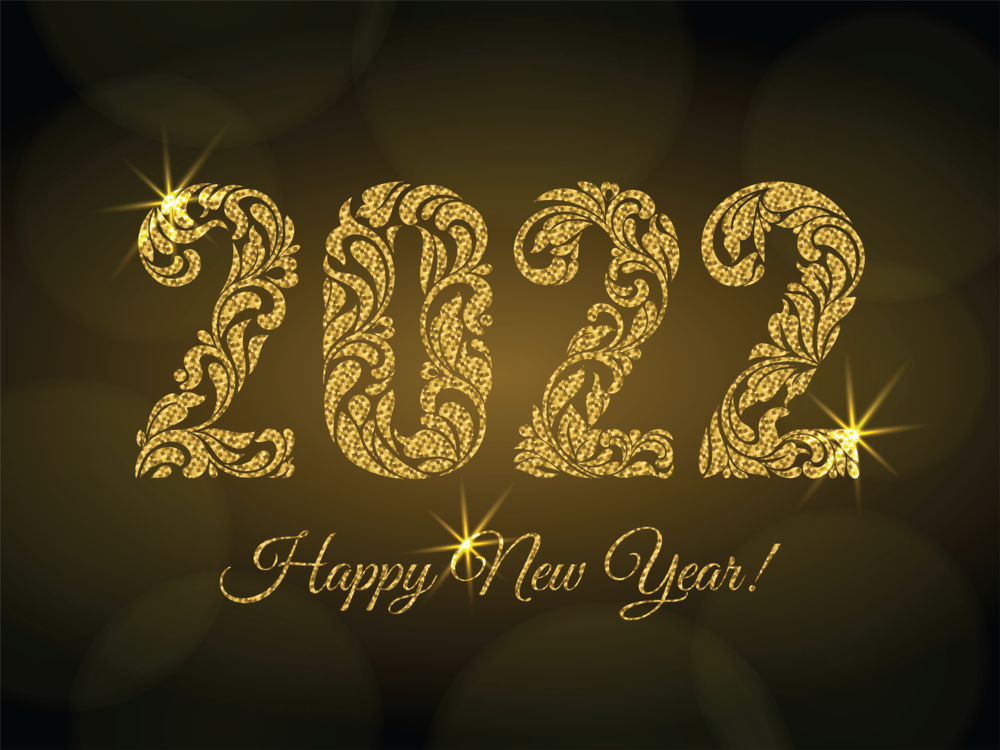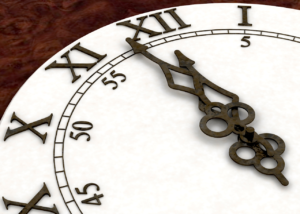Although today marks the third day of the new year, it is the first business day for most people. Why do we care that 1 January marks the beginning of a new year? After all, in most respects, 31 December is little different than 1 January. Yet, for most of us, the new year is a big deal. Ray Norris (@RayPNorris), a British–Australian astronomer with CSIRO Astronomy and Space Science, and Kay Owens, a lecturer in the School of Teacher Education at Charles Sturt University, assert our fascination with time has to do with our desire for order. They explain, “We’re creatures of habit, routine and organization.”[1]
This fascination was probably ingrained long before any homo species arose. Journalist Alexa Lardieri (@arlardieri) reports, “A [2018] study from Northwestern University revealed that animals can judge time. The study, published in the journal Nature Neuroscience, is ‘one of the most convincing experiments’ to show that animals understand time. … During the test, a mouse ran on a physical treadmill in a virtual reality environment. The mouse then learned to run down a hallway to a door, and after six seconds, the door opened and the mouse continued on to collect its reward. After several sessions like this, researchers made the door invisible in the virtual reality environment. The mouse still ran to where the door used to appear and still waited six seconds before running down the track to receive its reward.”[2]
At some point in pre-history, humanoids began having a deeper understanding of the passage of time beyond day (light from the sun) and night (lit by phases of the moon). That understanding produced an appreciation for keeping a calendar. Norris and Owens explain, “We take calendars, and the way we use them to keep track of our lives, for granted.” They go on to ask, “Where did these allotments of time that are such a crucial part of how our society functions actually come from?” They believe humans’ first understanding of a longer passage of time (a month) began by observing the moon. They write, “The changing appearance of the moon in the night sky is one obvious marker of the passage of time. At the start of its cycle (‘new moon’) the moon lies directly between the sun and Earth and we can’t see its illuminated face. As the moon moves in its orbit, we see a crescent. The crescent grows over a period of nights until the entire face can be seen — when it becomes a ‘full moon’. The face then wanes until, once again, it can’t be seen from Earth. This cycle is called a ‘lunation’ and it formed the basic unit (month = moon-th!) of many early calendars. A lunation takes an average of 29.53 days.”
You can already begin to see a problem. The sun doesn’t much care about half-days as it orbited by the earth. Rounding down to 29 days or up to 30 days, quickly puts a lunar calendar out of sync. As a result, many lunar calendars alternated giving some months 29 days and others 30 days. Such a system still results in out-of-synch calendars on a regular basis. These problems led to the development of the solar calendar — the time it takes for the Earth to make one complete orbit around the sun. We obviously call this orbital cycle a year. One of the benefits of the solar calendar was that it could help determine when the solstices and equinoxes would occur. Norris and Owens explain, “Early astronomers used solstices (when the sun is at its furthest from the equator) and equinoxes (when the sun crosses the plane of Earth’s equator) as starting and finishing points.” Old habits, however, are hard to overcome. As a result, Norris and Owens explain, some astronomers tried to reconcile the lunar and solar calendars. They write, “Lunisolar calendars attempted to keep in sync with both the moon and the solar year. This was not an easy task, as there are about 12.368 lunations in a solar year. A lunar calendar consisting of 354 days (12 lunations) would keep in step with the moon — with some days added in from time to time — but would very soon get out of step with the year and, therefore, the seasons.” If you’re a farmer and want to know to start planting, being out of step with the seasons is not a good thing.
As I pointed out in my New Year’s Eve post, many historical lunar calendars started the new year in March. This start date meant it could be tied more closely to the vernal equinox (about March 21), when day and night are of equal length, marking the start of spring. Spring does seem to be a better place to start the new; however, our ancestors decided they needed more parties in the dead of winter when they are closeted inside. A celebration of the new year seemed to be just the ticket to such a celebration. We can thank Julius Caesar for the change. Journalist Borgna Brunner, explains:
“The early Roman calendar designated March 1 as the new year. The calendar had just ten months, beginning with March. That the new year once began with the month of March is still reflected in some of the names of the months. September through December, our ninth through twelfth months, were originally positioned as the seventh through tenth months (septem is Latin for ‘seven,’ octo is ‘eight,’ novem is ‘nine,’ and decem is ‘ten.’ … The first time the new year was celebrated on January 1st was in Rome in 153 B.C. (In fact, the month of January did not even exist until around 700 B.C., when the second king of Rome, Numa Pontilius, added the months of January and February.) The new year was moved from March to January because that was the beginning of the civil year, the month that the two newly elected Roman consuls — the highest officials in the Roman republic — began their one-year tenure.“[3]
One of the gods worshiped during Numa Pontilius’ day was Janus, the god of gates and doors. Janus was an interesting looking god because he had two faces — one looking forward and one looking back. It seemed entirely appropriate to Julius Caesar to start the new year in a month named after a god who could look back on the old year and forward to the new year. Caesar added a new twist to his calendar, the leap year. Norris and Owens explain:
“Caesar’s reform didn’t quite end the confusion. His calendar assumed that each year was 365.25 days long, and that the addition of one extra day every four years would be adequate compensation. However, even then it was known that the actual length of a year was slightly shorter than this — the modern estimate is 365.24219 days. The difference between this and 365.25 is not much — 0.00781 days, or about 11.25 minutes. But over time it adds up: in a thousand years, the discrepancy is 0.00781 × 1,000 = 7.8 days.”
Adding leap years helped, but it didn’t solve the synchronization problem. So, in 1582 that Pope Gregory, relying on the advice of the best astronomers and mathematicians, decreed synchronization problems would be addressed by omitting three leap years every 400 years. Norris and Owens note, “He declared that new centuries would not be leap years unless divisible by 400. This became known as the Gregorian calendar, and is the one we use today.” Since accurate timekeeping has become so important, we now adjust calendars with leap seconds. Wikipedia explains, “A leap second is a one-second adjustment that is occasionally applied to Coordinated Universal Time (UTC), to accommodate the difference between precise time (as measured by atomic clocks) and imprecise observed solar time (known as UT1 and which varies due to irregularities and long-term slowdown in the Earth’s rotation). The UTC time standard, widely used for international timekeeping and as the reference for civil time in most countries, uses precise atomic time and consequently would run ahead of observed solar time unless it is reset to UT1 as needed. The leap second facility exists to provide this adjustment.” As you can see, even though humans have had thousands of years to try and work out a perfect calendar, Norris and Owens observe, “All calendars were — and still are — plagued by the lack of synchrony between the moon’s cycle and the length of the year, and by the fact that neither the length of the solar year nor the length of the lunar month is a whole number.”
Norris and Owens provide a wonderful overview of many different calendars that have been used over the years around the world. They conclude, “We think of time as something constant, inexorable. But the ways we measure it are hugely influenced by our culture and religion — a calendar is the result of a complex interplay between the underlying science of the astronomy, climate, or natural environment on which it is based, and the social fabric of the society that uses it.” I started this article with a question: Why do we care that 1 January marks the beginning of new year? The answer is that we all need new beginnings. British author Alex Morritt has written, “New year — a new chapter, new verse, or just the same old story? Ultimately we write it. The choice is ours.” I hope this year you are able to write an exciting new chapter to your life.
Footnotes
[1] Ray Norris and Kay Owens, “Keeping track of time,” Australian Academy of Science,
[2] Alexa Lardieri, “Yes, Your Cat Can Tell if You’re Out All Night,” U.S. News & World Report, 23 October 2018.
[3] Borgna Brunner, “A History of the New Year,” Infoplease, 17 December 2020.





